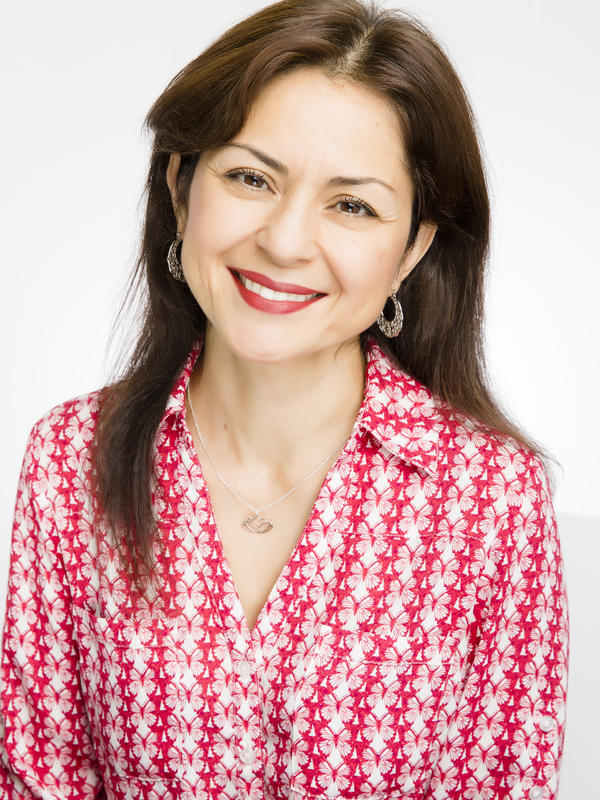
Sedelia Rodriguez
Department
Environmental Science
Office
Contact
I am a geologist who specializes in igneous petrology and geochemistry, which means someone who studies rocks that solidified from magma or lava and tries to decipher how these formed.
My research focuses on the origin and distribution of lavas forming large igneous provinces or flood basalts. These eruptions have occurred in many locations on Earth, as well as on other planets, throughout geologic history. The smallest and youngest province is located in the United States. This site covers parts of Washington, Oregon, and Idaho. There are also very large eruptions that cover over 2 million km2, like the Siberia Traps in Russia.
Before I got my PhD, I worked as an environmental consultant, and I am excited about transitioning back to environmental science in my role at Barnard. I'll still be doing my work on volcanoes, which is a little different, but being part of an environmental science department and teaching students about the importance of our environment is a great opportunity to combine these aspects of my work and interests.
I'll be teaching lab courses for Introduction to Environmental Science, and in the spring of 2015, I will be teaching a course related to geology and igneous petrology.
- Post Doctoral Research Scientist- Lamont-Doherty Earth Observatory- Columbia University
- Ph.D. Florida International University, Miami FL
- Igneous Petrology
- Volcanology
- Geochemistry
- Environmental Science
- EESC BC1011, Introduction to Environmental Science Lab
- EESC BC3800/3801, Senior Thesis Seminar
- EESC UN1011, Earth: Origin, Evolution, Processes, Future
- EESC BC3012, Brownfields
- FYSB BC1114, Hot Stuff: First Year Seminar
- BIOL BC1599, Science Journal Club
- EESC BC3028, Volcanoes and the Environment
- Barnard College Faculty Mini-Grant- 2015
- Joint Oceanographic Institute Research Grant-2006
- Dissertation Year Fellowship 2004-2005, Florida International University
- Research Grant Recipient 2003, Geological Society of America
- Teaching Award 2002 (first place), Florida International University
- Travel Grants, Graduate Student Association-Florida International University, 2002, 2003, 2005.
- Field Trip Leader: GSA 2003 Annual Meeting field trip, The Columbia Flood Basalts and the Yakima fold belt
Rampino, M.R., Baransky, E., and Rodriguez, S., 2020, Proxy evidence from the Gartnerkofel-1 core for hypoxic conditions in the western Tethys during the end-Permian mass extinction event: Chemical Geology, v. 533, https://doi.org/10.1016/j.chemgeo.2019.119434.
Rampino, M.R., Eshet-Alkalai, Y., Koutavas, A., Rodriguez, S., 2019, End-Permian stratigraphic timeline applied to the timing of marine and non-marine extinctions; Paleoworld, https://doi.org/10.1016/j.palwor.2019.10.002.
Rampino, M.R., Rodriguez, S., Baransky, E., Cai, Y, 2017, Global nickel anomaly links Siberian Traps eruptions and the latest Permian mass extinction: Nature Scientific Reports 7, Article number: 12416.
Rodriguez, S.R., Sen, G., 2013, Eruption of the Grande Ronde Basalt Lavas, Columbia River Basalt Group: Results of Numerical Modeling: in Reidel, S.P, Camp, V.E., Ross, M.E., Wolff, J.A., Martin, B.S., Tolan, T.L., and Wells, R.E., eds., The Columbia River Flood Basalt Province: Geological Society of America Special Paper 497, p. 1-14, doi:10.1130/2013.2497(10).
Krasa, D., Herrero-Bervera, E., Acton, G., Rodriguez, S., 2011, Magnetic Mineralogy of a Complete Oceanic Crustal Section (IODP Hole 1256D): The Earth’s Magnetic Interior, Springer Science and Business Media, B.V.
Herrero-Bervera, E., Acton, G., Krasa, D., Rodriguez, S., 2011, Rock Magnetic Characterization Through an Intact Sequence of Oceanic Crust, IODP Hole 1256D: The Earth’s Magnetic Interior, Springer Science and Business Media, B.V.
Sano, T., Sakuyama, T., Ingle, S., Rodriguez, S., and Yamasaki, T., 2011, Petrological relationships among lavas, dikes, and gabbros from IODP Hole 1256D: insight into magma plumbing system beneath the East Pacific Rise: Geochem. Geophys. Geosyst. v. 12, Q06013, p. 26, doi:10.1029/2011GC003548.
Longhi, J., Durand, S.R., Walker, D., 2009, The Pattern of Ni and Co Abundances in Lunar Olivines: Geochimica et Cosmochimica Acta, v. 74, p. 784-798.
Yamasaki, T., Ingle, S., Durand, S.R., Sakuyama, T., Sano, T., 2009, Trace Element Analyses of basalts and insitu Gabbros collected from a Superfast Spreading Ridge, Exp.309/312(in prep).
Leg 206, Expedition 309 and 312 Scientific Parties (Durand, S.R.), 2006, Drilling to Gabbro in intact ocean crust at the East Pacific Rise; Science, v. 312, p. 1016-1020.
Teagle, D.A.H., Expedition 309 Scientific Party (Durand, S.R.), 2005, The Hard Yards: Deep basement drilling of an in situ section of oceanic crust formed at a superfast spreading rate. Recent results from IODP Expedition 309 to Hole 1256D, Eastern Equatorial Pacific.
Durand, S.R., Sen, G., 2004, Preeruption history of the Grande Ronde Formation lavas, Columbia River Basalt Group, American Northwest: Evidence from phenocrysts: Geology, v. 32 no. 4, p. 293-296.
In The News
An alumna takes a seagoing adventure into the heart of climate change.
After classes went remote, three Barnard juniors created hands-on learning experiences when they took their studies on a cross-country adventure.
Read about the new accomplishments of Barnard scholars.